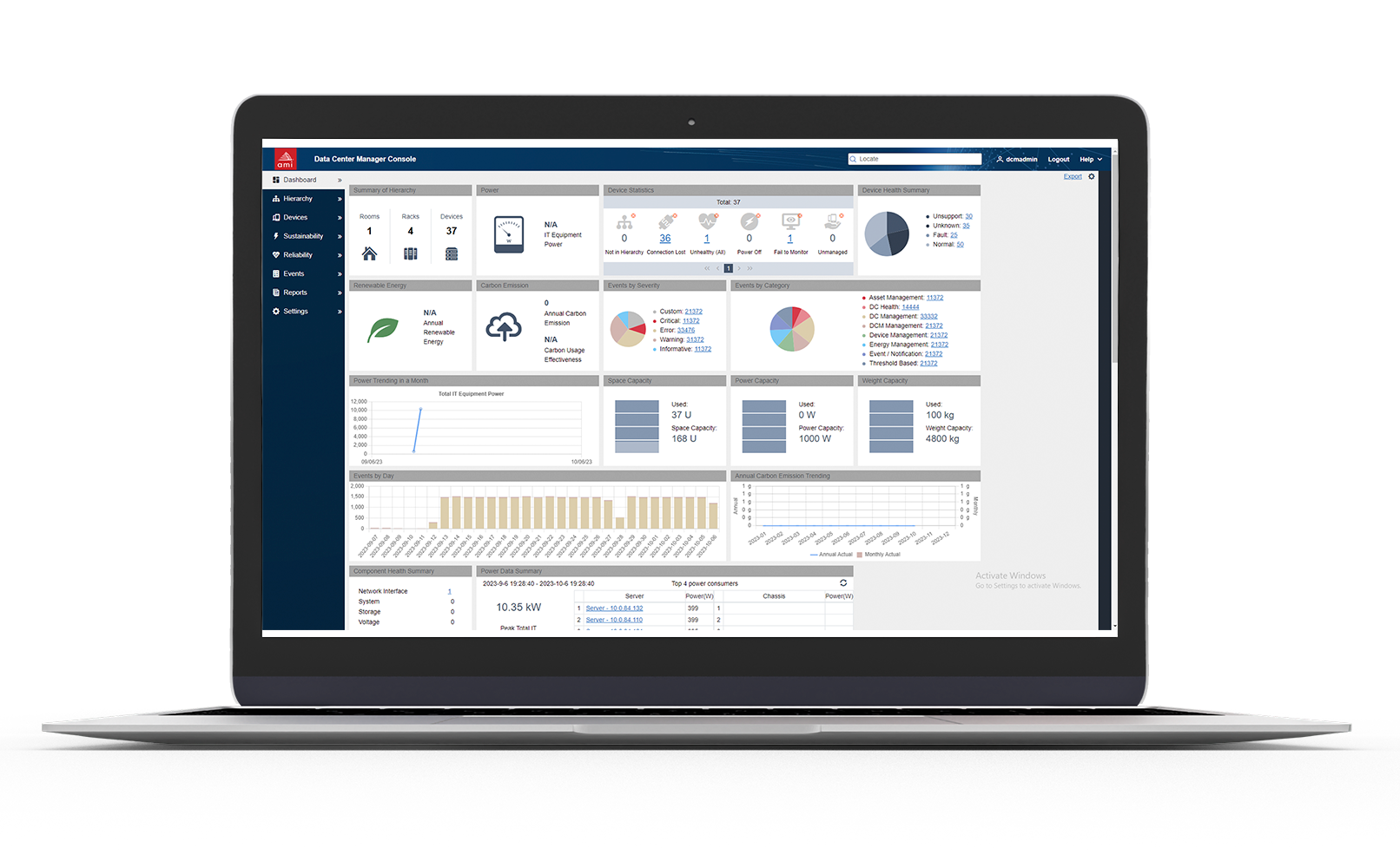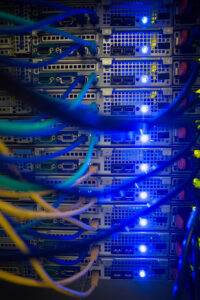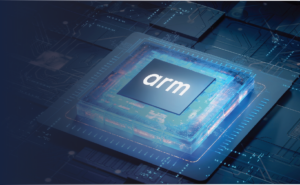Driving operational efficiency and Sustainability in enterprise data centers

AMI Data Center Manager
By leveraging real-time data collection, predictive analytics, and advanced reporting features, AMI DCM enables data-driven decisions that improve the sustainability, reliability and operational efficiency of data center infrastructure.
Sustainability
Reliability
Efficiency
AMI Data Center Managment Use Cases
Capacity Planning and Energy Consumption
Utilization and Health Monitoring
Infrastructure and Asset Manageability
AMI Data Center Manager FAQs
What is AMI DCM?
Is AMI DCM a Data Center Infrastructure Management (DCIM) Software?
In contrast, DCIM software generally focuses on managing the physical infrastructure of the data center, including networking, security, cooling, ticketing, lifecycle management, and other facility-level components.
AMI DCM complements DCIM by providing device-level insights, particularly in multi-vendor environments and AI-driven workloads. It can also integrate with DCIM systems to offer more granular control over a data center’s IT infrastructure.
What key features does AMI DCM provide?
- Multi-device and vendor Support: Suitable for heterogeneous environments, supporting servers and IT devices like power, networking, cooling, and storage from various manufacturers.
- Real-time Power and Thermal Monitoring: Provides insights into power usage and thermal conditions across servers, racks, or entire facilities without requiring additional hardware.
- Firmware Management: Enables seamless management of firmware versions with support for Redfish-based updates.
- Power Control: Performs power capping for protection against power surges or to increase rack densities.
- Underutilized Server Identification: Identifies servers that have been idle for extended periods and provides insights into potential energy savings through consolidation or shutdown.
- Sustainability Focus: Contributes to energy efficiency and reduces carbon footprints while supporting compliance with regulations and legislation.
- Scalability: Suitable for data centers of all sizes, supporting over 60K devices with a single instance.
- Multiple Interfaces: Accessible via a web console, integrated into custom solutions using RESTful APIs, supports real-time data streaming with Apache Kafka, and can be embedded through iFrames into other applications.
- What-if Analysis: Models potential changes in power consumption and carbon emissions if devices are removed, replaced, or if PUE/carbon intensity changes.
- Server-to-Server Comparison: Compares power and efficiency between servers running similar workloads to assist with procurement decisions.
What new features have been introduced in AMI DCM v6.0?
- GPU Management: Support for Support for most NVIDIA data center GPUs, as well as NVIDIA GB200 NVL72 platform.
- AI Infrastructure Management: All-around support for dense AI and HPC computing clusters and infrastructures including liquid cooling.
- Real-time PUE Monitoring: Connects to power meters to calculate and monitor real-time PUE and CUE.
- ARM-based Server Support: Support for Ampere CPUs and NVIDIA Grace CPUs
- Enhanced AMD-based Server Support: Support for more server models, with power-capping on supported models
- Tiered feature-based licensing: Base, Standard, and Premium tiers to support various customer needs
How does AMI DCM v6.0 support AI and GPU management?
- Real-time GPU health and performance monitoring.
- Power consumption tracking and optimization for GPUs, including power capping.
- GPU utilization metrics to ensure optimal allocation in AI workloads.
- Performing GPU tasks such as resetting GPUs, Enabling/Disabling ECC, diagnostics.
How can AMI DCM help optimize data centers for AI workloads?
- Monitoring the health and performance of GPU and server components in real-time.
- Ensuring AI clusters are running efficiently by identifying underutilized devices and optimizing workload distribution.
- Enabling power and thermal management specific to GPU-heavy environments, ensuring systems are stable during peak AI workload usage.
- Providing early detection of potential hardware failures before they affect operations.
How can AMI DCM ensure energy efficiency in AI-driven environments?
- Identifying underutilized resources and consolidating workloads.
- Implementing power capping for GPUs to prevent overconsumption during peak usage.
- Monitoring thermal performance to avoid overcooling and reduce unnecessary energy usage.
How does AMI DCM benefit colocation environments?
- Independent Management: Tenants can monitor and manage their own equipment while sharing physical space and infrastructure.
- Energy Efficiency: AMI DCM helps reduce overall energy consumption by identifying underutilized equipment and optimizing power usage, leading to potential cost savings.
- Thermal Management: Real-time thermal data helps ensure proper cooling for tenant servers, preventing hotspots and inefficiencies in shared data center spaces.
- Cost Optimization: Tenants can efficiently manage their workloads, preventing energy waste and optimizing server utilization within the shared infrastructure.
Can AMI DCM be used by colocation providers for monitoring shared infrastructure?
- Monitor resource usage across the entire data center, ensuring optimal performance for all tenants.
- Track the overall power and thermal efficiency of the data center to meet sustainability goals.
- Monitor cooling and power infrastructure in real-time, ensuring that resources are allocated efficiently to different areas of the facility.
How does AMI DCM help in managing power usage in a colocation environment?
- Tenant-Specific Power Usage Tracking: Tenants can view their power consumption and optimize it to avoid overuse and reduce costs.
- Data Center-Level Power Optimization: Operators can use real-time power and thermal data to make adjustments, ensuring that shared resources are used efficiently without overloading circuits or infrastructure.
What CPU architectures does AMI DCM support?
On which operating systems can AMI DCM be installed?
AMI DCM can be installed on multiple operating systems, including various Windows versions and Linux distributions.
Can AMI DCM integrate with other solutions?
How does AMI DCM improve data center efficiency?
How can I submit issues during AMI DCM evaluation?
Is there a list of supported devices?
While there is no exhaustive list, DCM supports servers from most major manufacturers like Dell, HP, Lenovo, and others. Power-capping and provisioning are supported on certain models.
For devices not fully supported, users can contact support, and new device support may be added in future releases.
What analytics does AMI DCM provide?
- Power consumption at server, rack, or facility level.
- Thermal conditions and cooling efficiency.
- Server utilization and workload distribution.
- Firmware management.
- Customizable alerts for potential issues, enabling proactive management.





